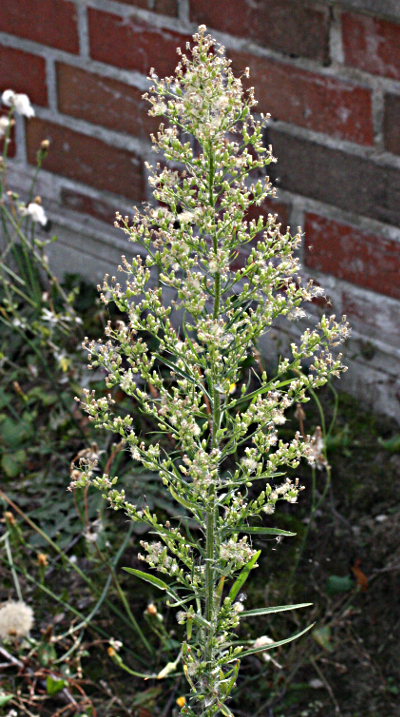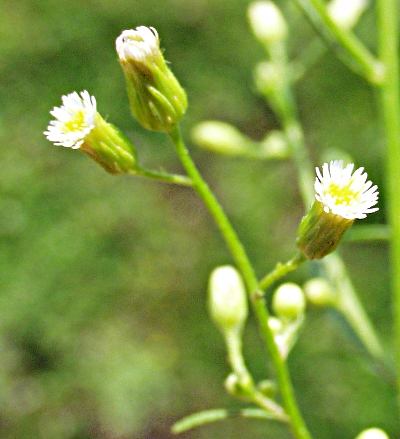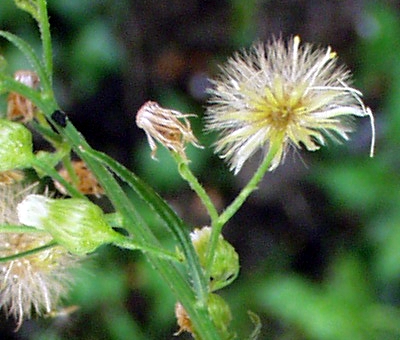Canadian horseweed |




Habit, flower heads, infructescence and lower stem leaf of the Canadian horseweed
| Conyza canadensis (L.) Cronq.: | |
| Blooming period: | July–Oktober |
| Height: | 10–150 cm |
| Flowers: | in heads, Ø of the heads 3–5 mm, stamens: 5, styles: 1 |
| Ray florets: | short, white |
| Disc florets: | yellow-green |
| Calyx: | transformed into a pappus |
| Stem leaves: | alternate, oblong to linear |
| Basal leaves: | stalked, oblong to linear, missing at the flowering season |
Plant annual, herbaceous, with a short rootstock (rhizome).
Stem erect, rigid, sparsely hairy or nearly glabrous, often highly branched, especially in the upper part.
Basal leaves and lower leaves stalked, oblong, basal leaves withering before flowering stage. Stem leaves alternate, sessile, the lower ones short-stalked, oblong to linear-lanceolate.
All leaves simple, more or less toothed, with a conical base, pointed, with ciliate margins.
The 1-15 mm long stalked flower heads are small and inconspicuous. They are arranged in paniculate or corymbose inflorescences. The receptacle is flat and pitted with short teeth between the ovarys.
Phyllaries in 3-4 rows, linear, pointed, green to pale yellow, the outer ones shorter than the inner ones, strongly recurved during fruiting time. Involucre bell-shaped, up to 4 mm long.
The 25-40 marginal ray florets are usually arranged in 2 rows, female and white. Ligules less than 1 mm long, 2-toothed or pointed. The 10-15 disc florets are hermaphrodite, about 2.5 mm long, 4-dentate and yellow-green. Florets at the base without chaffy leaves.
After self-pollination the inferior ovary forms an up to 1.5 mm long nut fruit (achene), which is oblong, pale to gray-brown and silky hairy, with a circle of about 20 off-white, bristly, up to 3 mm long sailing hairs (pappus).
| Floral formula: |
| ↓ K=pappus C(5) A0 G(2) inferior and * K=pappus [C(5) A5(connate)] G(2) inferior |
Occurrence:
Roadsides,
ruderal areas, fellow land. Prefers bright, slightly warm, slightly
nitrogen-rich locations and sandy soils.
Distribution:
Originally
North America, spread throughout the world today.